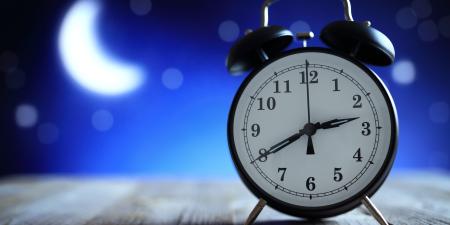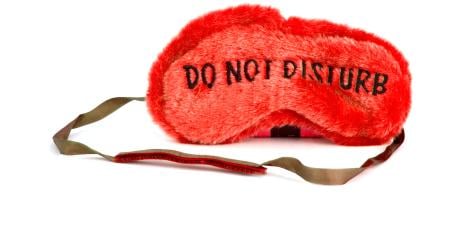The signs and symptoms of obstructive sleep apnea can be divided into those that are present during or around sleep and those that occur while one is awake. The pathological mechanism involved is partial or complete occlusion in the nasopharynx and oropharynx that results in a complete or partial arousal of the nervous system that then reopens the airway. Multiple arousals and oxygen desaturations produce symptoms of obstructive sleep apnea (OSA). These nervous system arousals manifest as restless sleep—an affected person can be seen tossing and turning during sleep. Snoring is often associated with this condition but is not always present. More severe cases can cause someone to wake gasping for air. This shortness of breath quickly resolves once the individual wakes [1]. An autonomic (sympathetic) activation that results in a sudden awakening can lead to palpitations, sweating, or even panic. The nature of these arousals can make it difficult to fall back to sleep, and this "maintenance insomnia" is a common complaint in someone who is later diagnosed with OSA. Since many of these symptoms occur during sleep, a bed partner is often the first to notice that something is wrong.
After an affected person wakes, the symptoms are multiple and varied. People who experience fragmented sleep can wake unrefreshed in the morning, even if they had an acceptable total number of hours of sleep. The multiple arousals and potential oxygen desaturations can also cause morning headaches. Inadequate sleep can produce daytime sleepiness that manifests first during quiet activity, such as reading or riding in a car as a passenger [1]. As the condition progresses, sleepiness affects other, more active pursuits, such as driving [2]. Decreased attention, memory, and focus can occur, and studies show that sleepy people tend to have more negative moods than rested people [3, 4].
Diagnosing OSA
OSA is diagnosed through history taking, physical exam, and diagnostic studies. The history should detail events during sleep and wake periods, with attention to the above-named experiences. The physical exam seeks to identify factors that can compromise the airway and increase the likelihood of its collapsing during sleep when the muscles surrounding the airway relax. These factors include a large neck (of over 40 cm [5]), obesity, large tongue, and large tonsils (grade 3 or more). Anatomical features that make the maxillae and mandible too small for soft tissue anatomy should also be examined. A high arched palate and a high mallampati score can increase the chances that an airway will collapse. Retrognathia and micrognathia can also result in an abnormal overjet (i.e., the lower incisors are behind the upper incisors) that can easily be seen in exam [6].
The gold standard for diagnosis is the overnight polysomnogram, which takes place during an overnight stay in a sleep laboratory with sensors placed on the upper lip to assess air movement and listen for snoring. Electrodes on the head and near the eyes help physicians identify the stages of sleep the patient is in and, even more importantly, assess arousals from sleep. The heart is monitored by EKG and oxygen probe. Sensors are also placed on the body to detect muscle activity. The number of arousals from apneas and hypopneas result in an index (AHI) of the number of times apneas and hypopneas occur per hour. More than five per hour in association with daytime sleepiness requires treatment. There is debate in the sleep field about whether there are circumstances in which a less comprehensive study done at home would suffice. Those with histories of sleep disturbance who have anatomical features that can compromise the airway should be tested for OSA. When the diagnosis is confirmed, physicians should assess its severity and collaborate with the patient on a treatment plan.
References
- Kales A, Cadieux RJ, Bixler EO, et al. Severe obstructive sleep apnea—I: Onset, clinical course, and characteristics. J Chron Dis. 1985;38(5):419-425.
- Findley LJ, Unverzagt ME, Suratt PM. Automobile accidents in patients with obstructive sleep apnea. Am Rev Respir Dis. 1988;138(12):337-340.
- Bedard MA, Montplaisir J, Malo J, Richer F, Rouleau I. Persistent neuropsychological deficits and vigilance impairment in sleep apnea syndrome after treatment with continuous positive airways pressure (CPAP). J Clin Exp Neuropsychol. 1993;15(2):330-341.
- Naegele B, Thouvard V, Pepin JL, et al. Deficits of cognitive executive functions in patients with sleep apnea syndrome. Sleep. 1995;18(1):43-52.
- Kushida CA, Efron B, Guilleminault C. A predictive morphometric model for the obstructive sleep apnea syndrome. Ann Intern Med. 1997;127(8 Pt 1):581-587.
- Jamieson A, Guilleminault C, Partinen M, Quera-Salva MA. Obstructive sleep apnea patients have craniomandibular abnormalities. Sleep. 1986;9(4):469-477.



